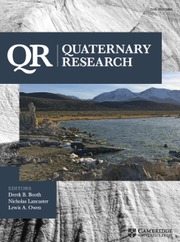No CrossRef data available.
Article contents
The evolution and degradation of Quaternary fossil fluvial fans in Brazilian semi-arid regions
Published online by Cambridge University Press: 22 May 2025
Abstract
Alluvial fans associated with eolian fields are common geomorphic features that reflect complex interactions in which the alluvial or eolian system acts as both a sedimentary source and a modifier. The semi-arid region of the São Francisco River is notable in Quaternary studies for its alluvial system and the largest Quaternary inland eolian field in Brazil. Fluvial fans are present on the western margin of the river and to the south of the eolian field. To characterize these fans, we used remote sensing, fieldwork, sedimentology, and OSL dating. We identified three fluvial fans: two asymmetric (> 185 km2) and one circular (8.5 km2). The eolian deposits played a critical role in both sediment supply and formation of the fluvial fans. Fan spreading occurred due to the difference in gradient between the eolian field and the river terraces. Fan deposits were dated to 4.5 ± 0.6 ka, and overlap with other systems, which suggests the system was active before 4 ka. Currently, these fans are degrading and being reworked by wind, and the drainages that exist across them are ephemeral. The Xique-Xique fluvial fans are now fossil systems, preserving evidence of past increased rainfall and base level lowering in the Late Holocene.
Information
- Type
- Research Article
- Information
- Copyright
- © The Author(s), 2025. Published by Cambridge University Press on behalf of Quaternary Research Center.


